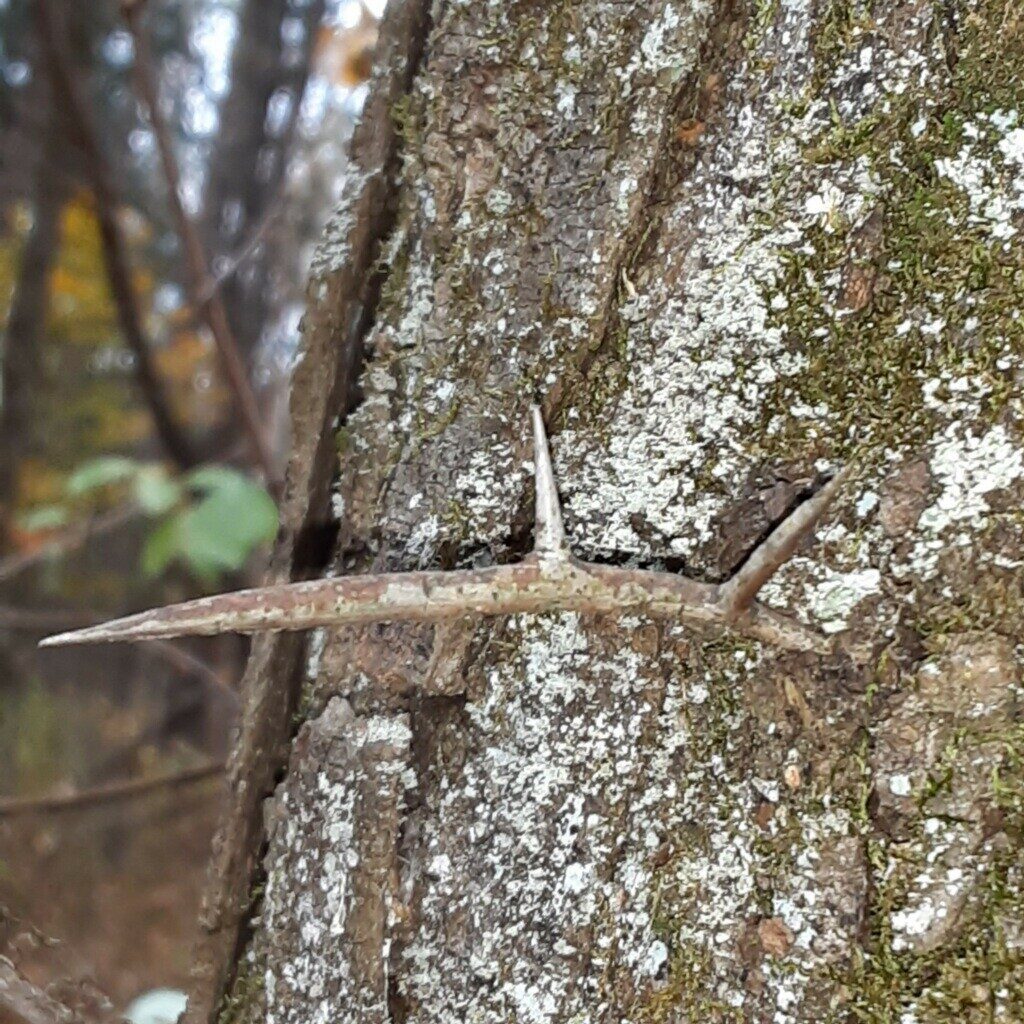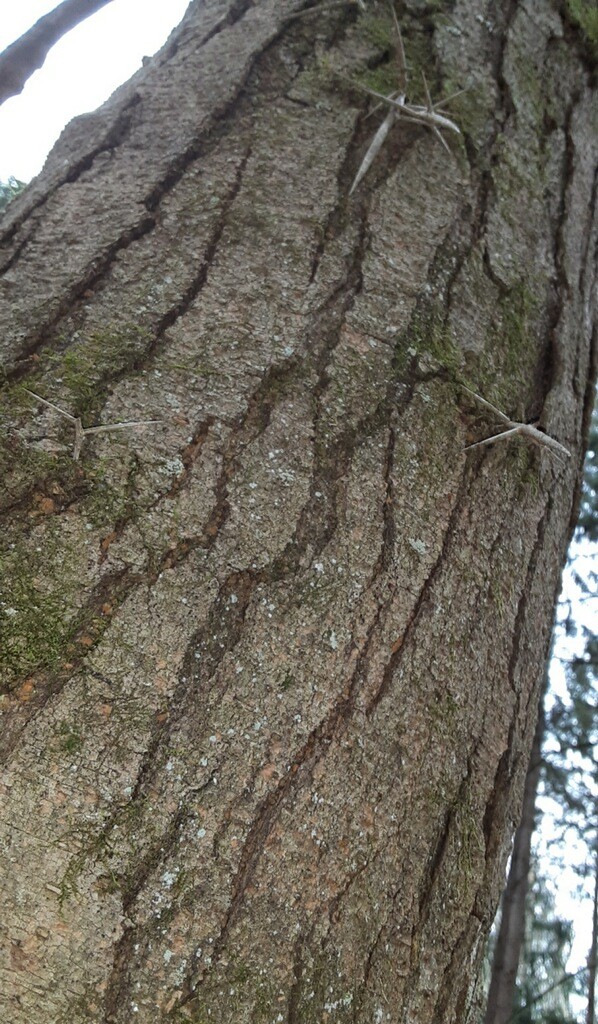By, Susan Sprout
Take care when walking near this tree – it is armed and may be dangerous! Botanists have indicated that its thorns may be genetic upgrades developed to keep browsing animals from chewing on the bark. Honey locust, with the scientific name of Gleditsia triacanthos, is a member of the Fabaceae or Pea Family, like its close relative found nearby, Redbud, whose magenta flowers will be adorning bare branches soon. It is prettier and less prickly.

Light-demanding Honey locust trees can be found in wetlands and uplands, too. It is a hardy species, native to states on both sides of the Mississippi and up through West Virginia and into central Pennsylvania. In fact, the USDA Forest Service map showing its spread, actually mirrors the shape of the Muncy “bump,” the geological feature that indicates the end of Bald Eagle Mountain and causes the Susquehanna River to swish around it in a half-circle. (A much-used visual clue that I use when looking at maps, from there, I know where I am, a short hop to home.)
I read somewhere that a tree’s trunk is its essential identity. Honey locust’s trunk has ridged and fissured gray-brown bark with thorns growing out of it, up to three inches long. They extend singly and in bunches of three’s up through lower branches. You can see them better at this time of year without leaf cover. Does this indicate that its bark is worse than its bite? And by “bite,” the meaning is clear – the very sweet, honey-flavored “snack” that awaits inside the ripe seed pods. The edible pulp develops between the hard bean seeds in flat and slightly twisted pods that can range in length from eight to sixteen inches long to about an inch wide. Used as food and medicine by many indigenous populations in its range, animals and birds, too, like the sweetness.

Do not confuse this tree with mature Black locust tree which has paired spines at the base of each leaf instead of long thorns. It has toxic properties. The Honey locust trees must grow to ten years of age before bearing seeds, with large crops occurring about every other year. They have been found alive up to 125 years old.
Today Honey locust is used as livestock food. Its dense wood is great for fence posts and furniture. Research is being done on its usefulness for treating diseases. A practical use, while camping, hiking, on extended walks – rips in cloth can be held together by thorns, carefully inserted like straight pins!


